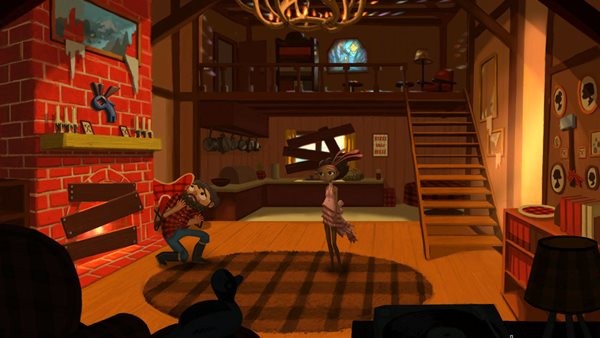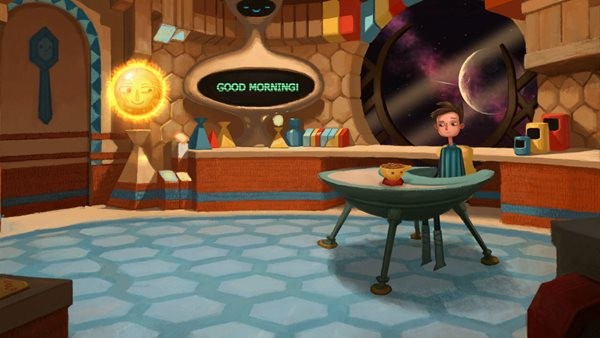Also On: PS4, PC, iOS
Publisher: Double Fine
Developer: Double Fine
Medium: Digital
Players: 1
Online: No
ESRB: E10+
I’m glad, in a way, that Grim Fandango and Broken Age came to the Vita (and PS4) just a few months apart. After all, until the latter game came out, the former represented Tim Schafer’s last foray into adventure games — a genre over which he looms large, having created not only Grim Fandango, but also having served as one of the principal players behind the Monkey Island series. And since a) I’ve never before played any of Schafer’s games, and b) I’m not really into adventure games outside of the odd hidden object game (assuming those count), the proximity of the games’ release dates meant I could basically see twenty years of the genre’s evolution in the span of just a few months.
My conclusion: it’s improved significantly. Or, at least, it’s gotten significantly easier. (I’ll admit, the two are often intertwined for me.)
While the first conclusion is obviously debatable, I don’t think there would be much argument over the second. After all, it’s just…I don’t know, easier, for lack of a more accurate descriptor. There’s a lot less guesswork involved. You don’t spend anywhere near the same amount of time walking around random places, trying to interact with every single thing you come across and hoping you’re figuring everything out in the correct order. Whereas in Grim Fandango you had to slowly feel your way through every step as you puzzled it out, in Broken Age you get a cursor that changes shape when it hovers over something you can use.
Not only that, it feels like the dialogue is much more streamlined. In Grim Fandango you could spend a lot of time getting involved in circular conversations. In Broken Age they all flow naturally — or, at least, as natural as branching dialogue trees can go. Your questions get answered, and then you move on to the next phase of the conversation; there’s no sarcastic responses as you ask the same questions over and over again. (I recognize that this may represent a loss for some people, particularly if they cut their teeth on ’90s-style humor.)
While those “improvements” may be seen as contentious by some people, I doubt that anyone would debate that the graphics here are significantly better. After all, it doesn’t matter what game we’re talking about, if it’s more than fifteen years old it’s going to show its age. Broken Age, by contrast, feels bright and modern — as it should, since the main characters are young, optimistic kids, not travel agents for the dead. To some extent, I guess, it lacks the distinctive visual identity that a game like Grim Fandango possessed, but if that’s the standard we’re going by, I don’t think it’s one that many games would manage to clear.
Besides, if you’re complaining about something like that when it comes to Broken Age, you’re not really appreciating everything that’s here. It follows a pair of interesting main characters as they embark on fun adventures through worlds that feel like they tumbled out of a modern-looking fairy tale. The writing is engaging, the characters (main and otherwise) all feel relatively fleshed-out, and the whole game moves forward at a pace that’s guaranteed to keep you hooked.
 In other words, I guess, it’s kind of like Grim Fandango for a new generation. Broken Age isn’t exactly the same, obviously — or, really, even slightly the same, beyond the genre — but it’s proof that Tim Schafer still knows how to make one heck of a game, no matter the era.
In other words, I guess, it’s kind of like Grim Fandango for a new generation. Broken Age isn’t exactly the same, obviously — or, really, even slightly the same, beyond the genre — but it’s proof that Tim Schafer still knows how to make one heck of a game, no matter the era.



